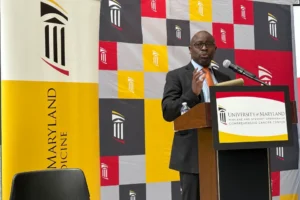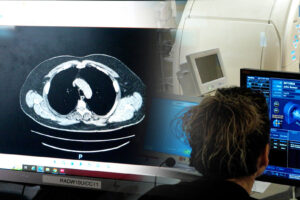Here’s what’s already happening at UMD’s $196M renovated Cole Field House
Published 2/20/18 in the Baltimore Business Journal
Renovations of Cole Field House on the University of Maryland, College Park campus are ongoing, but the first collaborative research projects are already underway with $200,000 in funding.
The overhauled Cole Field House was branded to be a “living laboratory,” with its Center for Sports Medicine and Human Performance designed to bring together researchers in neuroscience, genomics, biomechanics and other fields, from College Park and the University of Maryland, Baltimore to study the brain and nervous system. The field house will also have an orthopedic clinic and athletic performance center complete with an indoor football field, two outdoor fields and strength, conditioning and hydrotherapy centers. The first phase of Cole, including the new practice facility, debuted last year.
Cole Field House opened in 1955 and was the home of the Terps’ basketball teams through the 2001-2002 season. The arena was succeeded by the Xfinity Center in fall 2002.
The new field house project has been ongoing since December 2015, and its projected budget has been raised from $155 million to nearly $200 million. Fundraising efforts for the project began in 2014, and include a $25 million donation from Under Armour CEO and UMD alumnus Kevin Plank.
The facility is projected to be completed in 2019, but researchers are already utilizing its collaborative research opportunities.
Four joint UMD-UMB projects have been awarded $50,000 each in seed funding under the umbrella of the Center for Sports Medicine and Human Performance — taking about 40,000 square feet of the new field house. Here is what’s happening at Cole:
Brain mapping: This was the first project to be awarded funding through the new collaborative research center. Researchers are working on new approaches in functional mapping of brain activity. Functional mapping is used to determine the specific organization of a person’s brain, to determine which parts control movement, sensation, language, etc. The mapping is often used by brain surgeons, especially for a procedure that may require removing something from the brain. The project is led by Associate Professor Yu Chen of UMD’s Fischell Department of Bioengineering and Professor Reha Erzurumlu of the University of Maryland School of Medicine.
Spinal cord repair: Researchers are working on the engineering of therapeutic exosomes, or small structures produced by a cell that may play specialized roles in certain physiological processes. coagulation, intercellular signaling, and waste management. In recent years, researchers have been investigating the clinical applications of exosomes including as biomarkers for indicating the presence of certain diseases, or for possible use in cancer therapies. The UMD-UMB researchers are investigating their potential uses in cases of spinal cord injury and repair. The project is led by Jay Steven of the UMD Fischell Department of Bioengineering and Associate Professor Junfang Wu of the University of Maryland School of Medicine.
Gene function after TBI: Researchers are investigating gene function changes in the hippocampus, a small section of the brain associated with memory and spatial navigation, after traumatic brain injury. The project is led by associate Professor Hector Corrada Bravo of UMD’s Department of Computer Science and Associate Professor Bogdan Stoica of the University of Maryland, School of Medicine.
TBI impacts in the gut: Researchers are investigating the observable physical and functional effects of changes seen in gastrointestinal cells, after traumatic brain injuries. The project is led by Mihai Pop of UMD’s Department of Computer Science and David Loane of the University of Maryland School of Medicine.






